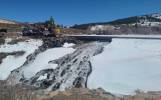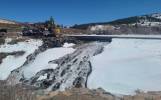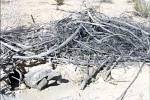Winterize your home for long-term payback
You may not want to think about it, but winter will be here again before you know it. Of course, winter means it's time to turn the heat back on, which can be a strain on your home energy budget.
"Older windows are a common culprit of air leakage in the home, but today's replacement options have insulating values that are moving closer and closer to the insulating value of a wall," says Chris Pickering, vice president of marketing, Ply Gem Windows. "If your home has original windows, having new energy efficient ones installed can make a significant difference in comfort, while also saving energy."
For instance, installing highly insulating R-5 windows in a replacement project previously would have been cost prohibitive to most consumers. With new glass technologies now available, windows that achieve R-5 performance (U-value of 0.22 or lower) have become much more affordable. Ply Gem Windows offers an R-5 option on many product styles at multiple price points.
"Air leakage through holes, gaps, and cracks is another one of the biggest causes of home heating and cooling loss," says Mike Kontranowski, strategic marketing manager, Dow Building Solutions. "It accounts for a significant amount of the energy used in most homes, with older homes being especially vulnerable to air leaks."
According to the U.S. Department of Energy (DOE), random air infiltration through gaps and cracks accounts for 25 to 40 percent of the energy loss in most residential structures.
Wouldn't it be great to save on energy and improve comfort in your home, not only this winter, but for many to come? In fact, you can save energy while the weather is still warm because most of the same things you do to seal your home and save heat in winter can also help keep your air conditioning inside during the hot months.
To help control air leakage through gaps and cracks larger than two inches, such as where the wall sets on the subfloor, where pipes and wires go through wall plates, and holes that lead into attics and crawlspaces, Kontranowski recommends that you ask your contractor for products like the Dow FROTH-PAK Foam Insulation/Sealant kit. "For smaller cracks around windows and doors, GREAT STUFF PRO Window & Door Insulating Foam Sealant is a good solution," adds Kontranowski.
In addition to sealing your home's cracks, gaps and window openings, there are many other projects to consider for winterizing your home. Pickering offers some additional tips to prepare your home for the cold weather and beyond.
* Add insulation to your attic to reduce heat loss and drafts.
* Install glass doors on fireplaces to reduce drafts and make sure your damper is working properly.
* Clean vents, air ducts and replace filters to promote air flow and ease the strain on your heating and cooling system.
* Clean out gutters, and if needed, have professional gutter protection installed to reduce the possibilities of ice damming. If melting ice is unable to drain due to debris buildup, it could seep into the walls and ceilings of your home. Gutter Warrior by Ply Gem is one option that strengthens the gutters and provides leaf protection.
* Drain a few gallons from your water heater to remove sediment and help it operate more efficiently.
* Upgrade to low-maintenance insulated vinyl siding, like Mastic Home Exteriors by Ply Gem Structure EPS, to efficiently minimize air leakage, especially between wall studs.
* Wrap your hot water pipes in insulation pre-formed for that purpose to reduce heat loss and lessen the workload on your water heater.
Because each home differs in the products that will work best to maximize its energy efficiency in the winter and year round, Pickering recommends having an energy audit to decide which winterizing projects are best for your home. Speak with representatives from your local utility company to set up an audit appointment for your house, or look for home energy performance contractors who can provide specific recommendations and perform any recommended improvements.
For more information on how you can save energy and make improvements to your home, visit www.plygemwindows.com.























